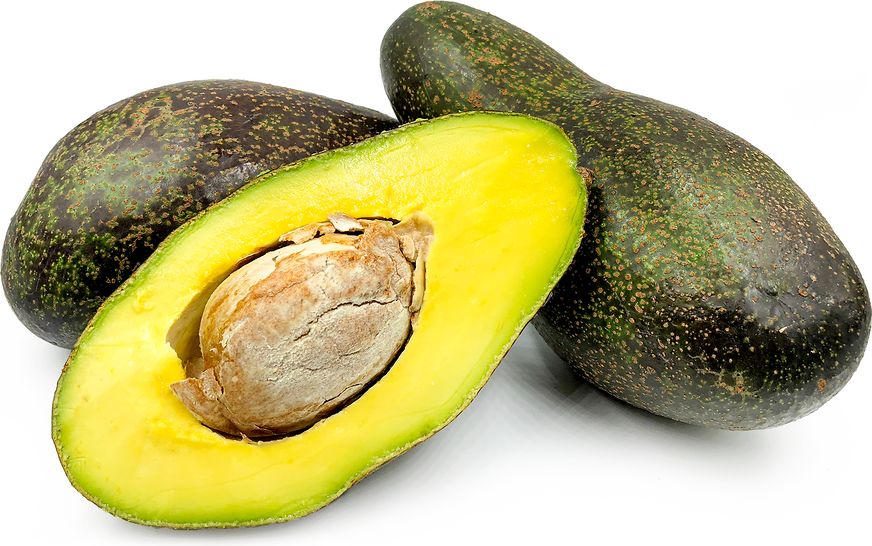


Tahitian Avocados
Estimated Inventory, lb : 0
Description/Taste
Tahitian avocados are large pear-shaped fruits that can weigh anywhere from 10 to 20 ounces, depending on the variety. The skin is thin and mostly smooth, and will remain green when ripe with darker overtones. The flesh is light yellow to pale green, and at its center is a large, almond-shaped seed that is covered in a paper-like sheath. The flesh is watery yet creamy, and offers a subtle, sweet, nutty flavor.
Current Facts
Tahitian avocados are members of the laurel family, and they are botanically classified as Persea Americana Mill. Avocados are further categorized into three distinct races: Mexican, Guatemalan and West Indian. Many cultivars are actually hybrids of the various races since most countries have developed their own varieties from seedling selections. Tahitian avocados are most likely West Indian hybrids, as the West Indian types tend to be larger in size with green skin, and are often described as the most tropical in character because they are not very cold hardy. Tahitian avocados are grown in home gardens and cultivated locally, but are not exported.
Nutritional Value
Avocados are a good source of protein, potassium, magnesium, folic acid, thiamin, riboflavin, and vitamins A, E, and K. They also act as a "nutrient booster" by enabling the body to absorb more fat-soluble nutrients in foods that are eaten alongside them. Avocados are well known for their oil content, which is packed with monounsaturated fatty acids that have been studied for their ability to reduce blood cholesterol.
Applications
Tahitian avocados can be used in raw and cooked applications, however it is best to avoid exposure to direct heat, such as broiling, and instead cook the avocados only briefly, or add them at the end of long-cooked dishes. Avocados are most commonly used raw, and can be sliced or cubed for salads, soups and sandwiches. Note that mashing Tahitian avocados may result in a watery texture because these varieties tend to have higher moisture content. Pair Tahitian avocados with other healthy fats, such as olive oil or nuts, as well as with tomatoes, salt, fresh herbs, garlic, onions, bacon, summer squash, aged cheeses, meats and seafood. Store avocados at room temperature until fully ripe, when they should be eaten within a day or two. To preserve them slightly longer, store in the refrigerator where they will not continue to ripen. Cut avocados can be brushed with lemon juice or vinegar to prevent discoloration, covered in plastic wrap or an air-tight container, and stored in the refrigerator where they will last for a day or two.
Ethnic/Cultural Info
Before humans settled on the island, the variety of plants on Tahiti was limited to seeds and spores that could spread naturally, such as via bird droppings or wind. Travelers, missionaries, and botanists introduced new species over time that thrived in the climate, including breadfruit, bananas, sugar cane, pineapples, taro, mangos, rambutan, pomelos, guavas, and more. Today, avocados and papayas are so abundant on the island that the local farmers use them as fodder for pigs.
Geography/History
Humans introduced most of the plants found today in coastal Tahiti, including the avocado. It is believed to have been brought to the island by the French in the mid-1800s. Avocados are native to Mexico, Central America, and the West Indies. The major civilizations of the New World, such as the Mayans and Aztecs, all cultivated the avocado before the arrival of Europeans, and carbon dating has shown that avocados were eaten as early as 10,000 years ago.
Recipe Ideas
Recipes that include Tahitian Avocados. One
| Paleo Gluten Free Eats |
|
5 Minute Kale Avocado Pesto |




